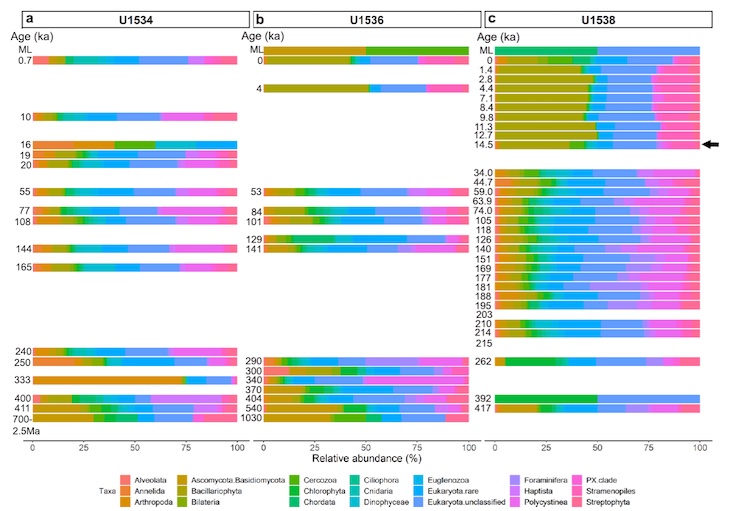 Warnock and colleagues studied ancient DNA preserved in sediments to understand ecosystem change in the oceans surrounding Antarctica. This study was based on sediment cores taken aboard the JOIDES Resolution as part of International Ocean Discovery Program Expedition 382. The paper, titled "Ancient marine sediment DNA reveals diatom transition in Antarctica" details the thorough work of extracting ancient DNA preserved in sediments to understand ecosystem shifts through time.
Warnock and colleagues studied ancient DNA preserved in sediments to understand ecosystem change in the oceans surrounding Antarctica. This study was based on sediment cores taken aboard the JOIDES Resolution as part of International Ocean Discovery Program Expedition 382. The paper, titled "Ancient marine sediment DNA reveals diatom transition in Antarctica" details the thorough work of extracting ancient DNA preserved in sediments to understand ecosystem shifts through time.
The team recovered DNA from sediment cores collected from the seafloor off-shore of Antarctica’s peninsula. The study shows a change in the ecosystem around Antarctica during the Holocene, the most recent 12,500 years of Earth’s history. The ocean’s plankton became dominated by diatoms reflecting an environment dominated by sea ice. Modern anthropogenic warming threatens these ecosystems which are vital to Earth’s global ocean nutrient supply chain.
Excitingly, this paper details the discovery of the worlds oldest marine sedimentary ancient DNA, at 1 million years old.
Full Reference
Armbrecht, L., Weber, M.E., Raymo, M.E. et al. Ancient marine sediment DNA reveals diatom transition in Antarctica. Nat Commun 13, 5787 (2022). https://doi.org/10.1038/s41467-022-33494-4